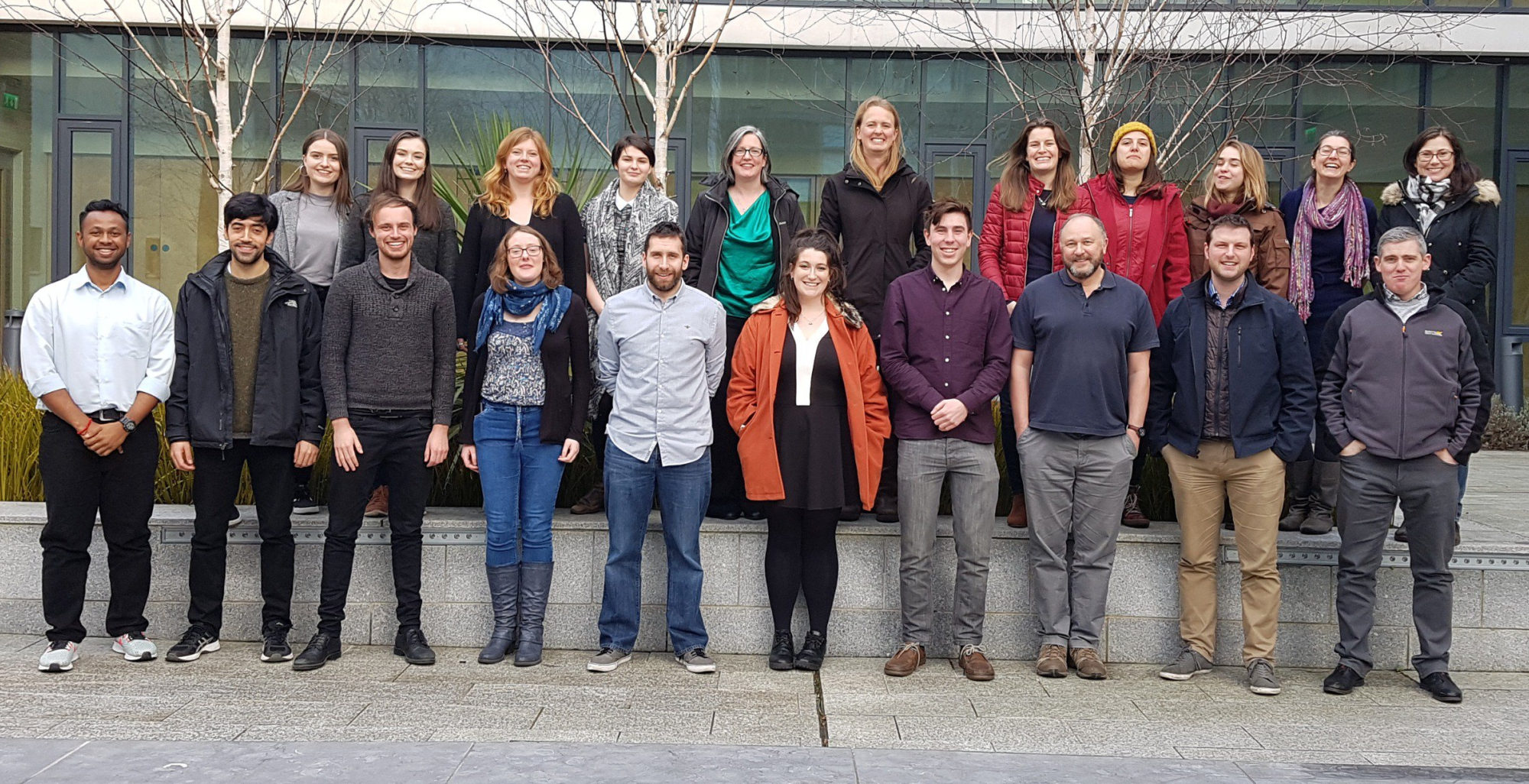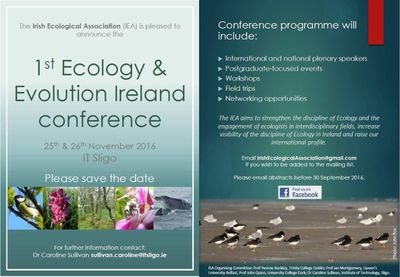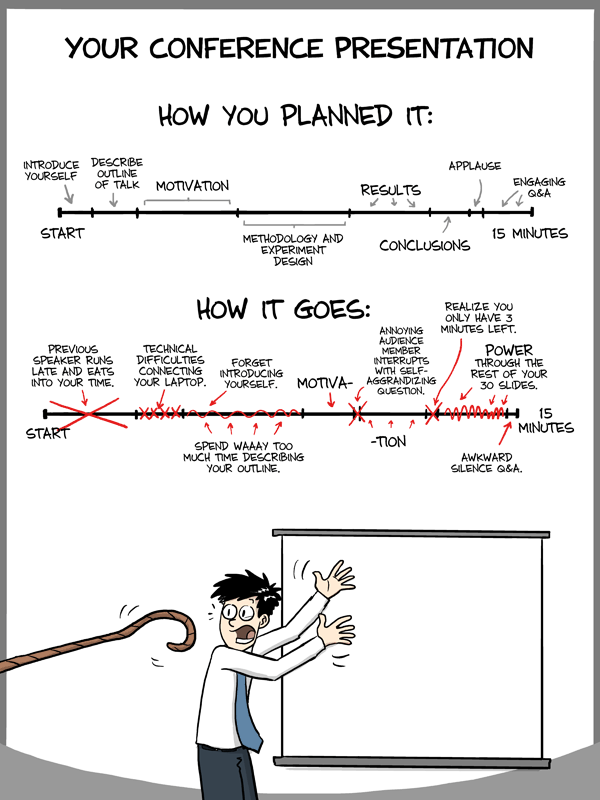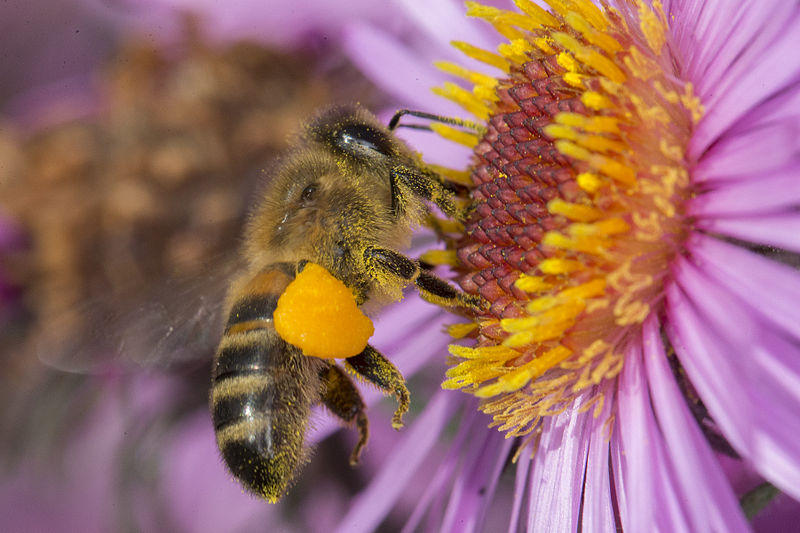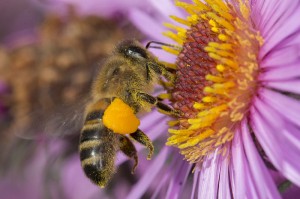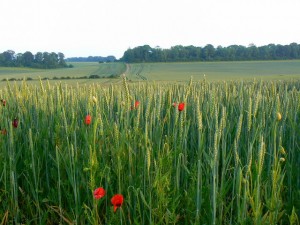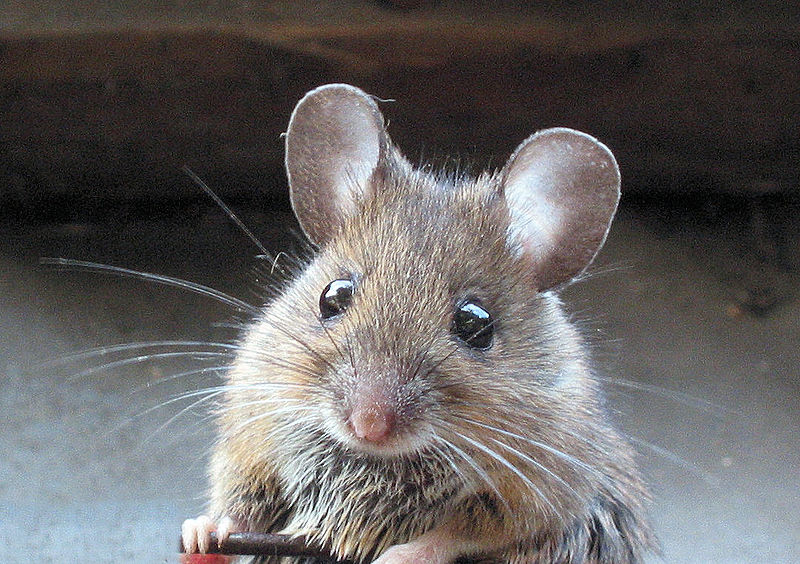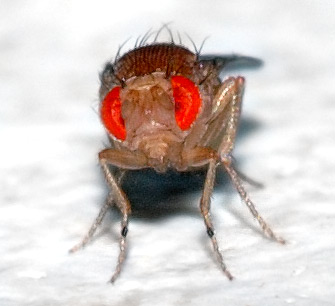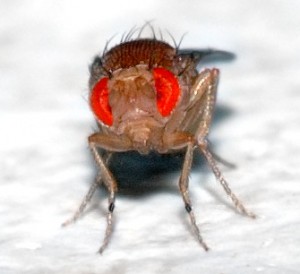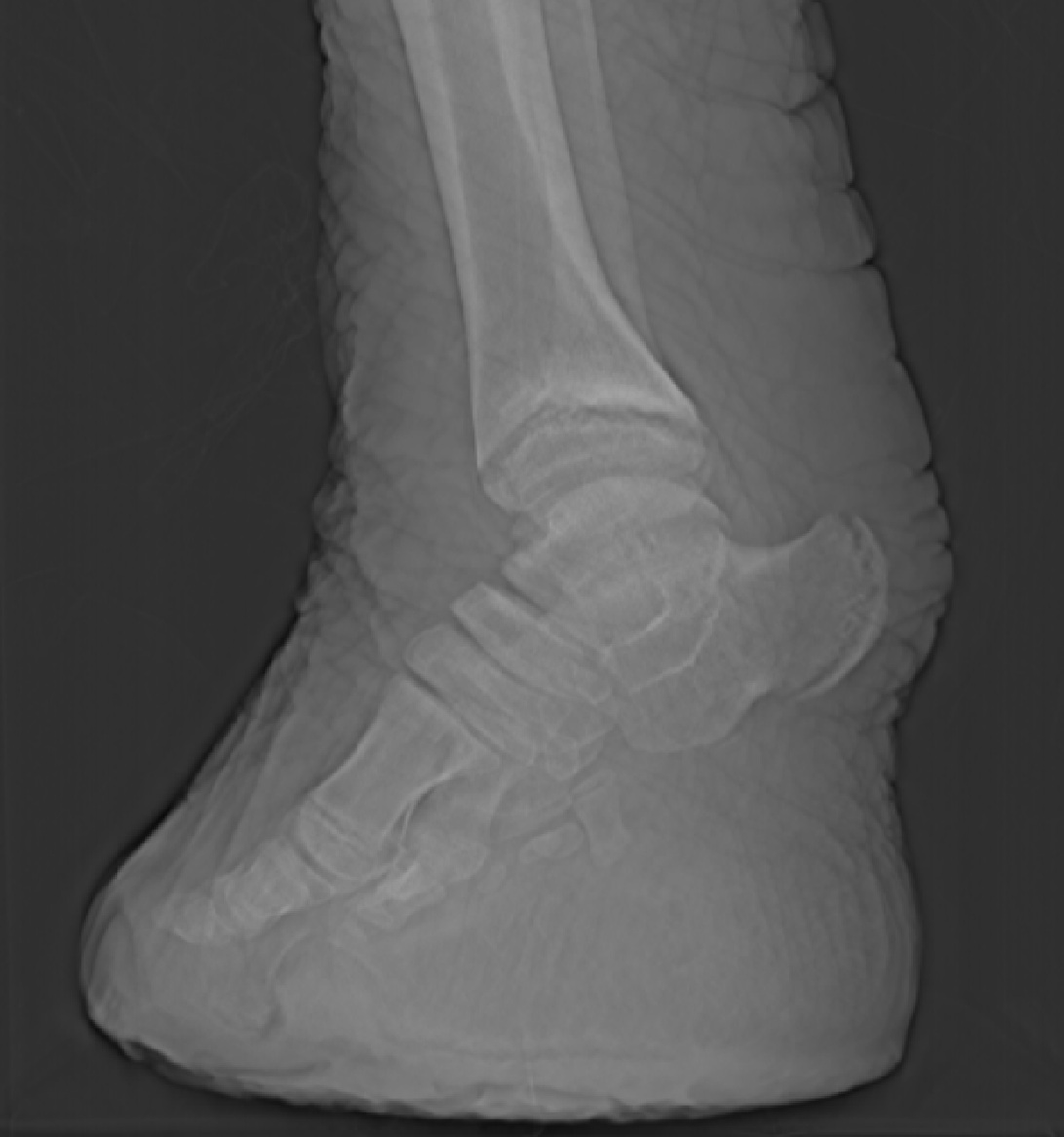Following on from the successful meeting last year, we held our Second Annual Irish Pollinator Research Network Meeting on 18th January 2019. This year, 22 researchers from TCD, UCD, DCU, MU, TUD and QUB gathered at DCU’s Water Institute for 16 oral presentations and discussions about pollinator, pollination and pollen research currently underway in Ireland. Continue reading “Irish Pollinator Research Network goes from strength to strength…”
Ecology & Science in Ireland: the inaugural meeting of the Irish Ecological Association
In the years to come, 140 ecologists working in Ireland will look back with fond memories of being part of the inaugural meeting of the Irish Ecological Association (24th-26th November). We will remember hard-hitting plenaries, compelling oral presentations, data-rich posters, influential workshops and the formation of the IEA’s first committee. The lively social events might be harder for some of us to remember… Continue reading “Ecology & Science in Ireland: the inaugural meeting of the Irish Ecological Association”
School of Natural Sciences Postgraduate Symposium 2016: Part 3/3
![image[3]](http://www.ecoevoblog.com/wp-content/uploads/2016/04/image3-300x300.jpg)
Aoibheann Gaughran (@Aoibh_G)
Supervisor: Nicola Marples
Title: How population density influences social mammal ecology: A case study of the European badger.
The local density of a population of social mammals can affect many aspects of its ecology including social structure, mating systems, dispersal behavior, territorial behavior and the dynamics of disease. Scientists and policy-makers need a comprehensive understanding of the local population density as this may dictate the most effective management strategy. The European badger provides a particularly good species to investigate the effects of population density on other density parameters because its density varies by orders of magnitude across its wide geographic range. Further, it acts as a wildlife reservoir for bovine tuberculosis in the UK and Ireland, where it is subject to control operations. Currently, a haphazard classification of local population densities hampers a clear understanding of the badger’s ecology, leading to inappropriate management systems. We have conducted a meta-analysis to investigate the relationships between social group size, territory size, and group density and population density in badgers. We demonstrate that population density fundamentally alters badger ecology, affecting the interactions both within and between social groups. We also propose a classification system for densities of the European badger which highlight important ecological differences between populations across the density spectrum. Our findings provide a more cohesive picture of the species’ ecology across its range, facilitating appropriate targeting of disease management and conservation regimes.
Michelle McKeon-Bennett
Supervisor:Trevor Hodkinson
Title: Characterisation of endophytic microbes within Sphagnum magellanicum from Clara Bog, County Offaly, Ireland: Implications for enclosed environment hydroponic systems in Space.
This work investigates potential mutualistic relationships between endophytic microbes and species of native Sphagnum moss sampled from Clara Bog, County Offaly, Ireland. The application of the ion-exchange ability of Sphagnum moss to water remediation and recourse recovery within an enclosed hydroponic system has been investigated by the author at NASAs Space Life Science Laboratory, Kennedy Space Centre, Florida. While this research indicated that Sphagnum could be utilized in this manner, it resulted in yet more questions, specifically in relation to microbial interactions and growth mechanisms within the Sphagna:plant test bed.
It is postulated that endophytic microbes growing mutualistically within S. magellanicum may be responsible for (a) anti-algae and anti-microbe effects within the hydroponic system and (b) increased nutraceutical content within the associated salad crop. Microbial DNA isolated from 100ug samples of S. magellanicum, was extracted and used to identify microbial endophytes using standard barcoding primers. Genetic fingerprinting is being utilised to type the endophytes. Isolation and culturing protocols from Sphagnum plants have been developed and applied for the characterisation of microbial species during hydroponic systems using S. magellanicum as a growth medium. Further investigation of mutualism between identified endophytes and a cultivar of Lactuca sativa known as ‘Lollo Rosso’ is ongoing.
Alex O’Cinneide
Supervisor: Anna Davies & Martin Sokol
Title: The effectiveness of renewable energy policies in encouraging renewable energy generation.
Over the last twenty years the EU and its individual countries have been engaged in implementing policies to increase the use of renewable energy (RE) as a generation source. Motivations for this support of RE generation include, but are not limited to, concerns over climate change and pollution, national security risks associated with fossil fuels, and a wish to increase the competitive position of RE in markets which have been traditionally dominated by carbon based power. The issue of climate change and renewable power’s role in addressing this complex challenge has, in particular, been brought into sharper focus following agreement on emissions pledges from all the EU countries, and a new target of keeping global warming below 1.5C in December 2015 in Paris at COP 21; targets which will require a material response by policy makers throughout the EU. An understanding of what policies have been most effective in increasing RE is therefore critically important in designing new schemes, a comprehensive analysis of which has not been completed to date. I am therefore conducting a comparative analysis of the effectiveness of RE policies in encouraging RE generation (solar and wind, which given their advantages in cost and deployment have been the dominate focus of policy) across the EU from 1995 to 2015, with a primary focus on four countries of contrasting contexts, Ireland, UK, Italy and Portugal. While several studies have attempted to determine the effectiveness of various policies in various countries, these have been limited in scope and have not attempted to account for the variety of policy design features or individual country, market and key actor characteristics that influence policy strength. Adopting an energy transitions theoretical framework, this research would constitute the first study undertaken to determine how policy has effected the growth of renewables across Europe.
Anne Dubéarnès
Supervisor: John Parnell & Trevor Hodkinson
Title: Systematics of the genus Embelia Burm.f. (Primulaceae – Myrsinoideae)
Within the Primulaceae family, the Myrsinoideae form a highly variable tropical group, ranging from climbers and shrubs to trees, and characterised by the presence of dark dots on the leaves and fruits. This subfamily contains over 1300 species, divided into approximately 40 genera. Many of these genera are in need of taxonomic revision, as their limits are poorly defined and sometimes rely on ambiguous characters. Among these genera is Embelia, a genus of climbing shrubs distributed mostly in South and South-East Asia, tropical Africa and Madagascar. Embelia displays extensive morphological variation – especially regarding the position, shape, size and merosity of the inflorescences and flowers. It is distinguished from other Myrsinoideae only by the climbing habit, and the relationship with morphologically similar genera has not been critically evaluated yet. The last monograph of Embelia by Mez (1902), recognised eight subgenera and 92 species, but the total number of species is currently estimated at 150-200, and the subgenera used by Mez must be assessed and refined. My project aims to combine morphological and molecular data in order to test the monophyly of Embelia and to provide a taxonomic framework of the subgenera.
Eoin Mac Réamoinn
Supervisor:Cliona O’Farrelly & Paula Murphy
Title: Toll-Like Receptor Gene Expression During Early Murine Embryonic Development.
Toll-like receptors (TLRs) are renowned for their fundamental roles in immunological surveillance and response initiation. While TLR proteins in invertebrate species, such as Drosophila, carry out functions in the immune system and in “building” the body plan in the embryo, such non-immune functions have not been thoroughly investigated in mammals. Although TLR genes have duplicated independently in these lineages, and may therefore have diverged in aspects of their functionality, limited studies have recently reported the expression of TLRs in the developing mammalian embryo (Kaul et al., 2012). We report a systematic study of Tlr gene expression in early to mid-gestational murine embryos using whole-mount RNA in situ hybridization and 3D imaging (using Optical Project Tomography), the combination of which has allowed us to record the precise tissues and stages at which these genes become expressed. We have found that the expression of these receptors is particularly enriched within the central nervous system with many Tlrs displaying complementary expression patterns in developing neural tissues, as is the case with Tlrs -1, -5, -6, and -7 in the neural tube at embryonic day 10.5. These findings are in line with experimental data showing that Tlrs -2, -3, and -4 can influence neural progenitor cell proliferation and self-renewal (as reviewed in Barak et al., 2014). In addition to the expression data we have generated, whole-transciptome data is being mined to build a comprehensive picture of Tlr activity during embryogenesis and will aid in the building of specific hypotheses for functional testing.
School of Natural Sciences Postgraduate Symposium 2016: Part 1/3
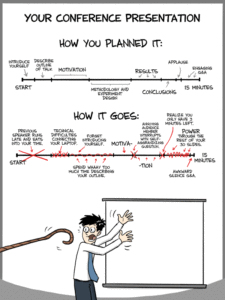
School of Natural Sciences Postgraduate Symposium 2016: Part 1/3
#zoobotpgsymp, not an infection transmitted by botflies, but the hashtag of the annual Botany-Zoology postgraduate symposium, hosted by the School of Natural Sciences, which took place on the 14th of April.
This year’s symposium hosted 15 student speakers over 2 sessions of talks as well as two pleniaries delivered by our guest speakers: Dr Nina Alphey (University of Oxford, Imperial College London) and Dr Rob Thomas (University of Cardiff).
For those of you who are interested in exactly what we work on here at EcoEvo@TCD, here are the abstracts from the PhD student presentations. Check out the TCD website for more details!
Darren O’Connell (@oconned5)
Supervisors: Nicola Marples & David Kelly
Title: Ecological character displacement as a driver of diversification
Since Darwin, competition has been recognised as an important factor driving diversification. Competition is energetically expensive and unstable, so direct competition is rarely observed. One way in which species can avoid competition is ecological character displacement. This is where differences between similar species are accentuated when they co-occur but are lost or minimised when they do not overlap.
We suspect this process may have occurred in our study system of south-east Sulawesi, Indonesia. Two closely related and similarly sized species of kingfisher occur in this region, one resident and one migratory. On the Sulawesi mainland and larger (continental) islands they spatially segregate by habitat and resource partitioning. On the smaller islands of the Wakatobi Archipelago there is less habitat diversity and we do not see evidence of either habitat or resource partitioning. We do see a shift in morphology of one of the competing species, the resident Collared Kingfisher (Todiramphus chloris). The Wakatobi population is larger (wing and bill) than mainland populations. The change in habitat structure on the Wakatobi Archipelago bringing these species into closer contact may have promoted this divergence in morphology to alleviate potential competition.
Preliminary genetic work shows divergence between Collared Kingfisher populations of the Wakatobi and Sulawesi mainland, indicating the taxonomy of these populations requires further assessment.
Sukontip Sirimongkol
Supervisor: John Parnell
Title: Morphological characters of Henckelia Spreng (Gesneriaceae)
The genus Henckelia is one of the most complicated genera in the family Gesneriaceae. Recent molecular phylogenetic studies on Chirita and Henckelia are presented. These have separated Chirita from other genera such as Henckelia, Damrongia, Microchirita, Liebigia and Primulina. Some members Henckelia have been moved to other genera including Codonoboea, Didissandra, Didymocarpus, Lindernia and Loxocarpus resulting in a reduction in the number of Henckelia species to 57. Defining morphological characters for Henckelia allowing separation from these other genera are as yet unclear but will be derived from materials collected on fieldwork. In addition, for these morphological studies, specimens lent from Aarhus University Herbarium (AAU), University of Aberdeen (ABD), The Natural History Museum (BM), The Forest Herbarium (BKF), Bangkok Herbarium (BK), Royal Botanic Garden Edinburgh (E), Royal Botanic Gardens (K), Kunming Institute of Botany (KUN), The National Herbarium Nederland (L), Singapore Botanic Gardens (SING) will be used. The final thesis will therefore be in part molecular but with palynological, ecological, morphological and biogeographic data. This will allow for a revision of Henckelia in Thailand and Indo-China including Myanmar and Southern China.
Dermott McMorrough (@derm_mcm)
Supervisor: Andrew Jackson
Title: Now you see me: Examining the variation in time perception
Sight is one of our most valuable senses: constantly feeding us information about our environment, allowing us to evaluate potential mates, and perhaps most importantly: enabling us to find food. In the animal kingdom, a number of strategies are deployed as individuals and groups go about finding the food necessary for moving, growing, and ultimately passing on ones genes.
The way in which animals and humans acquire, process, and act upon visual information is a highly evolved, intricate process played out over minuscule time scales. In the time it takes for a predator to realise that its prey is about to change direction, or for an expert batsman to notice the spin on an approaching baseball, it is often too late to act. Our knowledge of temporal variation in this key trait lag in comparison with our understanding of spatial acuity.
Using a combination of simulation and psychometric techniques, I aim to tease apart the relationship between information acquisition over discreet temporal scales and the evolutionary consequences for both animal and human systems.
Anindita Lahiri
Supervisor: Trevor Hodkinson, Gerry Douglas, Brian Murphy & Colin Kelleher
Title: Characterizing candidate disease resistance loci in ash (Fraxinus) and an assessment of ash fungal endophyte strain variation in Ireland
Ash is very useful and abundant tree found throughout Europe, which is now threatened considerably because of a disease called ash dieback. It is caused by a fungal pathogen known as Hymenoscyphus fraxineus Baral. It can damage plants irrespective of their age group but young plants are more susceptible to the disease. Ash dieback starts from the midrib of the leaves and travels through the midrib to the stem part of the plant where the fungal mycelia blocks the xylem and phloem vessels and the plant dies because of lack of water and nutrients. This project is currently undertaking a comprehensive study of the leaf fungal endophytes of healthy plants to characterize their microbiome. We have cultured endophytes in a malt extract agar media and isolated them on the same media by sub-culturing. We are currently amplifying nuclear ribosomal bar coding DNA regions and sequencing them to identify the fungal isolates. We will then test the biocontrol potential of some of these against the disease pathogen.
Maureen Williams (@MoDubs11)
Supervisor: Ian Donohue & Celia Holland
Title: Does parasitism interact with warming to modify energy flow in ecosystems?
Gammerid amphipods are key components of aquatic ecosystems around the globe, acting as important detritivores and frequently dominating benthic assemblages in both rivers and lakes. Their ability to process detritus and return nutrients to the ecosystem may, however, be undermined by infection with behaviour-modifying acanthocephalan parasites. Moreover, as gammerids are ectothermic, the impact of parasitic infection could also vary with temperature. We explore whether parasitism and warming interact to modify energy flow in ecosystems by comparing individual energy budgets for Gammarus duebeni that were infected with the common acanthocephalan parasite Polymorphus minutus, with those of uninfected individuals of similar size across a broad range of temperatures.
We’re all going on a (science) summer holiday…
We’ve had another fantastic year at EcoEvo@TCD. We’ve published some high profile papers and brought back tales from our fieldwork experiences. We’ve learned how to navigate some of the perils of academia and thoroughly enjoyed hosting an excellent series of seminar speakers.
Now EcoEvo@TCD will be taking a short break over the summer so we won’t be updating the blog over July and August. We’re currently in the midst of another conference season, presenting our research at various international meetings and learning about the latest cool scientific research. Add that to some exciting travels and summer science projects and we’ll have plenty of stories to tell.
When we get back we’ll report on the highlights of conference season and bring you more ecology and evolution related news, views and advice.
We hope you have a wonderful summer. See you in September!
Author: Sive Finlay, sfinlay[at]tcd.ie, @SiveFinlay
Image Source: pixabay.com
Seminar series highlights: Phil Stevenson
As mentioned previously on the blog, Andrew Jackson and I started a new module this year called “Research Comprehension”. The module revolves around our Evolutionary Biology and Ecology seminar series and the continuous assessment for the module is in the form of blog posts discussing these seminars. We posted a selection of these earlier in the term, but now that the students have had their final degree marks we wanted to post the blogs with the best marks. This means there are more blog posts for some seminars than for others, though we’ve avoided reposting anything we’ve posted previously. We hope you enjoy reading them, and of course congratulations to all the students of the class of 2014! – Natalie
Here’s articles from Maura Judge and Chris Parsisson inspired by Professor Phil Stevenson‘s seminar, “Pollinator fidelity in coffee and citrus: is it all just sex and drugs?” Continue reading “Seminar series highlights: Phil Stevenson”
Seminar series highlights: Fiona Doohan
As mentioned previously on the blog, Andrew Jackson and I started a new module this year called “Research Comprehension”. The module revolves around our Evolutionary Biology and Ecology seminar series and the continuous assessment for the module is in the form of blog posts discussing these seminars. We posted a selection of these earlier in the term, but now that the students have had their final degree marks we wanted to post the blogs with the best marks. This means there are more blog posts for some seminars than for others, though we’ve avoided reposting anything we’ve posted previously. We hope you enjoy reading them, and of course congratulations to all the students of the class of 2014! – Natalie
Here are Yutaka Kumagai and Cormac Murphy’s views on Dr. Fiona Doohan‘s seminar, “Plant-Microbe interactions – the good, the bad and the ugly”.
———————————————————————————-
Food security: A game changer for GMOs?
Yutaka Kumagai
The subject of genetic modification has always carried with it a certain level ethical ambiguity in the eyes of the wider public. While quite a significant proportion of the blame for this may be down to misinformation and ignorance, it may also be contributed to the somewhat shady operations of large corporations such as Monsanto. It is inevitably the more shocking or controversial stories that capture the imaginations of the public, and the David and Goliath legal battles between farmers and corporations do not fail to grab attention. Anti-GMO activist groups are also extremely vocal in their fight for organic produce, and many of the articles that may be sourced online are heavily biased in their favour.
On a national level, public opinion is clearly against the notion of genetically engineered organisms, a simple google search of ‘Ireland GMO’ returns multiple hits from anti-GMO sites. Yet while Irish consumers may not approve of GM, it is obvious that many also do not understand the concept. A certain amount of the blame for this ignorance surely lies with the lack of dialogue surrounding the topic, with most of the information broadcast being anti-GMO, without providing much of an explanation. This may even be seen in large scale shops such as Marks & Spencers lauding their wares as non-GM.
However, the benefits of many GM foods are such that surely a system of control would be more profitable than outright ban. In a recent seminar, Dr. Fiona Doohan, a senior lecturer at UCD, gave an insight into the research being undertaken by her team on disease resistance in cereal crops. Specifically, her works focuses on the infection of wheat and barley crops by Fusarium graminearum and F. culmorum, which are known causes of Fusarium Head Blight (FHB) disease. This causes bleaching of cereal grains, and is harmful to plants and animals. The main toxin produced during infection is deoxynivalenol (DON), which facilitates FHB, and may be attributed as the cause of many of the observable effects. By observing variance in wheat response to DON, Doohan was able to find a resistant genotype. Unfortunately, this resistant genotype carried with it its own set of negative traits, preventing it from use as an effective cash crop. As such, Doohan attempted to identify the specific genes associated with resistance. Expression levels of DON-resistant wheat genes were analysed through the use of microarray testing, with results verified through RT-PCR analysis. This allowed for the identification on orphan (lineage specific) genes involved in the defence pathway activated by DON to be identified. With further research, it will hopefully be possible for this pathogen resistance to be conferred to susceptible wheat strains.
It would be difficult to colour such a development in a bad light, especially considering that wheat is one of the most produced cereal crops in the world. So why is public opinion so against GMO? All GMO food products must pass rigorous testing by the WHO, with continuous assessment taking place once a product is released to the market. While certain GM foods, such as golden rice, do make their way into the public ‘good books’, even these success stories are not as widely known as they ought to be. Yet, it can only be hoped that the current research being undertaken by Doohan, and those like her, will turn the tide in this war of misinformation.
———————————————————————————-
Give us this day our daily bread
Cormac Murphy
Wheat and its by-products have been such an integral part of human livelihoods for so long they’ve become religious artefacts. They are everywhere, just ask a despairing coeliac. But for as long as we’ve been cultivating wheat, our health has been intertwined with that of the crop. Poor weather, mycological diseases or trampling could take both the income and vital nutrition from a family. And if an infected stalk was reaped and processed into food, it could pose a real threat to the health and sanity of a community. Some classic examples are the cases of ergot poisoning that lead to mass hysteria and witch burnings across Europe in the middle ages. Today with wheat representing the second largest source of calories for all mankind, the health of our wheat crop has never been more important.
And it’s up to people like Fiona Doohan, Director of the UCD Earth Institute to cultivate strains of wheat that can produce enough to meet the need of a hungry word (and economy) that are resistant to these harmful pathogens. Dr. Doohan’s lab focused on the fungus Fusarium graminearum, which causes fusarium head blight (fhb) a disease that devastates wheat and barley resulting in billions of dollars loss in crops annually. Dr. Doohan looks at the actions of the fungus focusing on one of the main toxins it produces, deoxynivalenol (DON) also charmingly known as vomitoxin. DOM interferes with protein synthesis and when applied by itself to the wheat heads produced the bleaching characteristic of fhb. In low levels DON has been found to prevent cell death, whereas at high levels DOM causes it. This facilitates the switch from vitotrophic to necrotrophic which is a key part of the disease’s progression and spread. Dr. Doohan looked at 2 cultivars of wheat; Remus which was susceptible to DOM but produces an economically viable crop, and CM 82036 which wile being a less viable source of income is resistant to DON.
Both were treated with DOM. After 4 hours the plants were observed and RNA samples and run through a custom microarray were taken from both plants, this was repeated after 24 hrs. The DON was seen to have a greater effect after 24hrs in the Remus both visibly and in terms of disrupting protein synthesis. In the resistant strain the majority of the proteins that seem to be produced in response to the toxin were “unclassified” the products of “orphan genes”. Orphan genes are genes with very specific lineages that we currently have very little information on in databases. Doohan’s team found that these particular orphans seemed to be linked to stress responses in the plant. There was also evidence that they were fast evolving, with even close phylogenic relatives baring genes with as little as a 50% match. They appeared to be more toxin specific than tissue specific, arising at the points where DON was introduced. These seem like the key to DON resistance and potentially the key to transferring that resistance. A yeast 2 hybrid screen was then used to examine the interactions of these orphan proteins with other proteins known to be active in stress resistance. In these tests a related mycological toxin T-2 was used on the yeast as yeast is highly DON resistant. Just to drive home the seriousness of these toxins T-2 is the key ingredient in now banned biological weapon known as “Yellow rain”. The results of these tests indicated that the orphans are involved in the activation of the SnRK1 stress resistance pathway thought how it interacts remains unknown.
These experiments have given us a glimpse at a potential new tool to protect the food security of the world. But with so little known about the genes involved, a lot of work still needs to be done. Some wheat genomes have recently been sequenced and the information that can be gathered from them may yet shed light on our orphans. As with any GM organism, particularly one that’s intended for human consumption, there must be a great understanding of exactly how these changes will affect the makeup of these plants.
Image: Wikicommons
Seminar series highlights: Amy Pederson and Christine Maggs
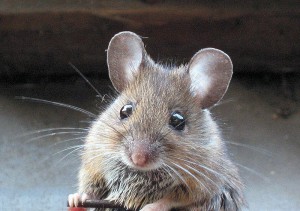
As mentioned previously on the blog, Andrew Jackson and I started a new module this year called “Research Comprehension”. The module revolves around our Evolutionary Biology and Ecology seminar series and the continuous assessment for the module is in the form of blog posts discussing these seminars. We posted a selection of these earlier in the term, but now that the students have had their final degree marks we wanted to post the blogs with the best marks. This means there are more blog posts for some seminars than for others, though we’ve avoided reposting anything we’ve posted previously. We hope you enjoy reading them, and of course congratulations to all the students of the class of 2014! – Natalie
Here’s views from Sharon Matthews on Dr. Amy Pedersen‘s seminar, “A systems ecology approach to infection and immunity in the wild” and Dermot McMorrough’s take on Professor Christine Maggs‘ seminar, “Invasive seaweeds and other marine organisms”.
——————————————————————————
It’s a ‘wormy’ world we live
Sharon Matthews
We all walk around thinking I will never have parasites but apparently our chances of becoming infected are high because there are around 1,400 species of parasite that can infect humans. If this news wasn’t bad enough, Dr. Amy Pederson informed us at her seminar that our chances of becoming infected with two or more parasites at the same time, is also very high. Dr. Pederson explained that through her work, she hopes to understand the phenomenon of co-infection and the interactions between these parasites in a host that drive this trend.
Dr. Pederson and colleagues showed through a meta-analysis of studies that co-infection is often associated with higher parasite abundance and a negative effect on human health. The interspecific interactions between parasites in a host can influence disease severity and transmission through the immunological responses of the host, making an environment more accessible for another species.
To investigate this phenomenon, Dr. Pederson chose to do a perturbation study using the wild species of wood mouse, Apodemus sylvaticus as a host system. A lot of past studies on parasitism have used a laboratory mouse model because of accessibility to the subject and ease of manipulation and control of confounding factors. I think it is very important to also have wild animal model systems because they strongly represent the variation and dynamics that would be seen in a real-life infection scenario. Also the wood mouse can be parasitised by 30 different species (both micro and macro parasites) and up to 70% of them can be co-infected which resembles the situation in humans.
Dr. Pederson wanted to determine the nature of the interactions among the parasite community in the woodmouse and to assess the stability of the community so she used the anthelminthic drug ivermectin to perturb the system. This drug targets nematodes, the most abundant member of this community so interactions between these and other groups should be apparent from perturbing their numbers. I liked the fact there was a longitudinal aspect to the experimental design as it allowed the effects on the parasite community to be analysed over time. All of the wood mice were tagged at the beginning and there were 3 different treatment groups: controls that received water at every monthly capture, a single treatment group and a group that received treatment of ivermectin at every capture. Faecal and blood samples were taken at each capture to check for levels of infection through egg counts and blood smears.
The results showed that treated mice had a 71% lower probability of infection 3 weeks after treatment than control mice but no difference was seen after one to two months because nematode numbers increased. This suggests that the effect on nematodes was short-lived and the community of parasites was resilient, returning to the original state before perturbation. This pattern for reduction and then returning to normal levels of infection was seen in Heligmosomoides polygyrus, the most abundant nematode in the community. This parasite shares an infection site with the protist, Eimeria hungaryensis. As the numbers of H. polygyrus reduced, the numbers of E. hungayensis increased and then returned to original levels once H. polygyrus recovered. This effect on a non-target species suggests that there may be a competitive interaction between the two species. They both occupy the same niche in the gastrointestinal tract of the wood mouse and reduction of numbers of the more dominant nematode may have given the protozoan a chance to use resources not normally available to it to colonise. No treatment effect was seen on any of the other parasite species.
The work of Dr. Pederson is very interesting and it gives us a window into the dynamics underlying co-infection. This work will broaden our understanding of the world of parasites and how they interact and will help inform us in our choice of treatment and which species may be effected by it. The one thing I was happy about coming out of the seminar was the fact that Dr. Pederson said, “those who are wormy usually remain wormy”. In other words, individuals with high burdens of nematodes (worms) show a tendency for reinfection over time. That leaves me with some hope that for at least now, I remain wormless and if the stats are anything to go by, I have a chance at remaining wormless for the forseeable future.
——————————————————————————
Review of Christine Maggs’ seminar
Dermott McMorrough
The effect of invasive species is, by now, well documented and is often brought to light when species’ such as grey squirrels, American crayfish, zebra mussels, and Japanese knotweed turn up in a new environment; an event all to familiar to ecologists. Those listed above are just some of the examples of ‘alien’ species known to kill off native creatures and plants when they become established in new habitats. In Ireland, for example, the role of the North American Grey Squirrel has been well studied due to the effect they have had on our native Red Squirrel since their introduction into Co. Longford in 1911.
Invasive species have an incredible ability to migrate and establish themselves thousands of miles from their origin, either organically, or often with a helping hand from humans for example by hitching a ride as stowaways on trade ships or in ballast tanks, as has been the case with Zebra Mussels. The shared ability of the aforementioned species to colonise vast areas is no mere coincidence. Several species are introduced to new ecosystems, accidentally or otherwise, but relatively few have enjoyed such enduring success. Aside from threatening native species of plants and wildlife, the incredible growth of these species can lead to them negatively impacting on anthropogenic activities, whether it be fouling mooring lines or clogging water intake pipes as has been the case at the Guinness brewery at St. James’ Gate.
Professor Maggs’ seminar began with an explanation of how an invasive species can colonise an area. While her background was evidently in Botany, she made a particular effort to appeal to the zoologists in the audience with numerous references to the role of oysters in the spread of macro algae. Her research covers a fairly broad area, and pinpointing an exact research question has eluded many in the room. We were, however, treated to a synopsis of how invasives go about establishing themselves, and the methods often employed to prevent this process or eradicate it if it has already taken place. For example, methods such as immersing oysters in concentrated brine or flash boiling them have proven effective in fighting the spread of invasive algae, which use the oysters as a vector.
The spread of an invasive alga would not seem like an immediately worrying problem to those untrained in ecology. As with many problems in science, it is not until the issue directly affects the people in charge of policy making that anything is done to rectify it. This unfortunate criterion was evident in one of the examples used by Professor Maggs. In 2008, the city of Qingdao was due to host the Sailing event of the 29th Olympic games, but just weeks before racing was due to start, an algal bloom covered Qingdao bay in a thick layer of Enteromorpha algae. The presence and strength of the bloom was largely accredited to the high levels of nitrates in the water as a result of farmland runoff, coupled with higher than average temperatures and rainfall. During the seminar, the use of giant plastic sheets in San Diego Bay was seen as an American answer to an ecological problem, but it worked. Credit where credit is due. The imminent deadline of the Olympiad prompted the Chinese authorities to tackle this ecological disaster with what has to be the most wonderfully Chinese way possible: by ordering 20,000 locals to line the beaches, and man over 1,000 fishing boats to rake in the bloom manually. Sure enough, within a few days over 100,000 tonnes of the algae had been shipped out of the bay.
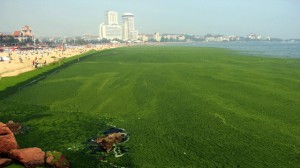
Increases in the amount of travelling done by humans and more importantly freight over the past century has led to an explosion in the ranges of successful invasive species, to the point at which one must wonder how endemic species can survive at all? The increased efficiency of our transit routes has also meant that invasives no longer rely on miracle migrations, such as that likely undertaken by the Iguana of the Galapagos. With the ever-increasing demand for fresh exotic produce in the developed world, the ships are getting faster, the coolers are getting colder, and the chances of an invasive species making it’s way around the world in less than 24 hours, perfectly preserved in Tesco wrapping and ready to colonise a new ecosystem have been made just that much easier. It seems that when it comes to being an invasive species, every little helps.
Seminar series highlights: Fred Marion-Poll
As mentioned previously on the blog, Andrew Jackson and I started a new module this year called “Research Comprehension”. The module revolves around our Evolutionary Biology and Ecology seminar series and the continuous assessment for the module is in the form of blog posts discussing these seminars. We posted a selection of these earlier in the term, but now that the students have had their final degree marks we wanted to post the blogs with the best marks. This means there are more blog posts for some seminars than for others, though we’ve avoided reposting anything we’ve posted previously. We hope you enjoy reading them, and of course congratulations to all the students of the class of 2014! – Natalie
Here’s thoughts from PJ Boyce and Joe Bliss on Dr. Frederic Marion-Poll’s seminar; “Why do we avoid bitter molecules (and why do flies avoid them too)?”
———————————————————————————-
A Bitter Taste for Deadly Sweets!
PJ Boyce
Have you ever held a cockroach in your bare fist? Have you felt its wings flicking against the inside of your hand? Its feet sticking to your skin? Personally, I’ve touched and held a lot of weird and wonderful things but never have I been so thoroughly disgusted as when I held a cockroach. Its such an…icky…creature! So why is it in this modern age of mass extinctions, that the cockroach has managed to persist, even considering the considerable amount of effort on our part to exterminate the little devils! I can’t answer that. What I can do is explain yet another way in which these tough little guys are managing to foil us again: They are avoiding our poisoned bait traps! How? By changing how they think about them!
Of course, I use the term ‘think’ loosely. Really, they are changing how they perceive the bait and this all boils down to how they taste it. Gustation, the sense of taste, in insects, is probably best understood in the old, reliable, Drosophila. The fruit fly’s well documented genome lends itself to many different kinds of mutation experiments, including, as Dr. Frederic Marion-Poll was delighted to explain to the gathering of neuroscientists, zoologists, and other interested parties at his talk, experiments on taste.
Of Marion-Poll’s many examples of experiments performed on the humble fruit fly, one in particular is very relevant. They were interested in seeing whether olfactory receptors (associated with smelling) expressed on taste cells could trigger a ‘taste’ response to an oderant (smelly) stimulus. Interestingly, they observed that not only could the flies taste the ‘smelly’ molecule (using electrophysiological measurements) but also that the behaviour of the flies differed depending on where the olfactory receptor was expressed. When the receptor was expressed in a sweet tasting cell (initiating a sweet response), the fly was attracted to the stimulus but when the receptor was expressed in a bitter tasting cell (initiating a bitter response), the same stimulus triggered an aversive response and repelled the fly.
‘What has this got to do with cockroaches?’ I here you ask. Well, the key finding to take from this experiment was that it didn’t matter what chemical was being tasted. What mattered was where the receptor was being expressed. So, when I heard about populations of cockroaches learning to avoid poisoned bait I immediately thought of the work of Marion-Poll and co.
The bait that has been used for the cockroach traps is glucose, the (usually) universally sweet molecule. On its own and under normal circumstances, cockroaches can’t get enough of glucose. Add a little poison to this delectable treat and the cockroaches were literally killing themselves to get a tasty mealful. Recently, however, populations of cockroaches have been discovered that avoid glucose, whether or not it has been poisoned, in favour of other, usually less desirable foods. More than this, they also show the classic ‘bitter response’ (common to almost every tasting animal) to tasting glucose. This indicates that they are now tasting glucose as a bitter molecule!
‘Wouldn’t it be better if the cockroaches evolved to recognise the poison instead of disregarding all glucose?’ you might ask, and you would be right, except that’s not how evolution works, is it? It is possible that a cockroach could evolve a gene that makes a receptor that detects the poison. A much more likely scenario, however, is that the cockroach accidentally expresses an already existing gene, namely the glucose receptor, in a bitter tasting cell. By doing this, it would react to glucose as if it were a bitter molecule, thereby having an advantage over all the gullible cockroaches in the presence of poison. Is this mechanism feasible, though? Almost certainly! When we consider that olfactory receptors can be functionally expressed in taste cells, it’s not too much of a stretch to suggest that a receptor which already exists in a sweet taste cell could ‘hop the fence’ to a bitter taste cell. I think it a much more prudent question to ask: ‘What are we going to do about the impending cockroach apocalypse ’cause we just can’t seem to stop these guys!?’
———————————————————————————–
A Taste of Insanity?
Joe Bliss

“What is real? How do you define, ‘real’? If you’re talking about what you can feel, what you can smell, what you can taste and see, then real is simply electrical signals interpreted by your brain.” – Morpheus, The Matrix, 1999
The 1999 film The Matrix makes us question the reality of our own existence. The main protagonist Neo discovers that his entire world is an electronic simulation, created by sentient machines to occupy his mind while they harvest the energy generated by his metabolism. For the purposes of the rest of this blog, I will make the assumption that the world we find ourselves in is not a simulated reality. However after a research seminar given by Fredric Marion-Poll, I find myself debating the reality around me. Is sugar sweet? What is sweet?
These may sound like the questions of a man on the verge of insanity, but they are interesting issues to raise and are without obvious answers. We can describe a colour by its wavelength and sound by its pitch as these are physical, measurable quantities, but there are no inherent properties of a chemical that define it as bitter or sweet.
Taste is a sensation produced when a chemical reacts with a receptor cell in the taste buds of the tongue. However there are different taste receptor cells, including one for bitter tastes and one for sweet tastes. These cells have an array of unique receptors for a number of different chemicals. If a chemical matches with a receptor on a sweet cell it will stimulate the cell to send a ‘sweet’ signal to the brain.
Marion-Poll suggested that animals have adapted to associate harmful chemicals with ‘bitter’ which stimulates an evasive response. He showed a video of this recognisable ‘bitter response’ in both an insect and in this must-see video of a child being fed grapefruit juice. The research he presented also highlighted that taste has more levels of complexity than just simple recognition. In one experiment, fruit flies were offered a choice of four fructose food sources containing varying levels of strychnine, a highly toxic substance. As expected, flies avoided this toxin as it stimulates a bitter taste receptor. However even when the bitter tasting cell was destroyed in the fly, that strychnine laced food source was still avoided. This suggests that the strychnine also inhibits the sweet tasting cells, further enhancing toxin avoidance. However this was not the case for all the bitter chemicals they tested and the process is not yet fully understood.
As a final intriguing conclusion to the seminar, research was presented which found that some cockroaches in the USA have adapted to avoid glucose baited traps. The sugar bait was made less sweet for these cockroaches which now taste the glucose as bitter, making them avoid the traps. So this begs the fundamental philosophical question; what is the true taste of sugar? As Morpheus might say, it is whatever your mind chooses it to be.
Image: Wikicommons
Seminar series highlights: John Hutchinson
As mentioned previously on the blog, Andrew Jackson and I started a new module this year called “Research Comprehension”. The module revolves around our Evolutionary Biology and Ecology seminar series and the continuous assessment for the module is in the form of blog posts discussing these seminars. We posted a selection of these earlier in the term, but now that the students have had their final degree marks we wanted to post the blogs with the best marks. This means there are more blog posts for some seminars than for others, though we’ve avoided reposting anything we’ve posted previously. We hope you enjoy reading them, and of course congratulations to all the students of the class of 2014! – Natalie
Here’s Kate Minogue and Rosie Murray’s blogs inspired by Professor John Hutchinson‘s seminar, “Six-toed elephants and knobbly-kneed birds! Case studies in the evolution of limb sesamoid bones.”
———————————————————————————
Them bones them bones need………investigating!
Kate Minogue
When a seminar begins with a stuffed cat photo-bombing with the crowd you know its not going to be your usual type of research seminar, and what John Hutchinson discussed during his talk in Trinity College Dublin was far from the norm. The acclaimed scientist and author of the hugely popular blog “What’s in John’s freezer?” kept the audience intrigued throughout. From six-toed elephants to two-knee-capped birds the diversity of sesamoid bones was dealt with in great detail and, more importantly to an audience of previously oblivious zoologists, their evolution over time gave us some amazing new insights.
Firstly I think its important to begin as Hutchinson himself did. By explaining what a sesamoid bone is. They are essentially small, rounded masses embedded in certain tendons and usually related to joint surfaces. They can be found in the knee, hand, wrist and foot of the human body. Hutchinson himself explained them as a waste basket of bones that “ sit in funny places”. By looking at different species which possess these bones in certain locations, Hutchinson began investigating their function and the role they play in locomotion ability. It was through his work in this field that these small, awkwardly located and previously misunderstood bones were credited with giving greater mechanical advantages to an organism by allowing a change in direction of muscle force.
The most interesting part of Hutchinson’s work, from my point of view, was his research on elephants’ feet. By looking deeper into the composition of the foot of present day elephants and past remains he was able to highlight an evolutionary change that has occurred over millions of years. Looking at an elephant you would consider them to be very flat footed animals. However Hutchinson’s research proved this observation to be incorrect. By dissecting present day elephant feet (from that famous freezer of his) he was able to show that they are in fact pointed-toed animals. At the rear base of their foot they have a mass of fat which causes the bone structure of their foot to be tilted ( almost as if they were wearing a high wedge made out of fat). But it was what he found within this mass of fat that make this unlikely foot structure functionally possible. He identified a sesamoid bone embedded within, which was acting as a sort of prop along with the cushion of fat. This bone was later referred to as a pre-digit as it has lost its tendon connections over time and now acts more like projections from the base such as digits. The adaption of the sesamoid bone in the foot of the elephant over 40 million years ago has allowed elephants to change their posture from a once flat footed animal to a very unusual large mammal with a tilted foot presumably giving the animal better mobility.
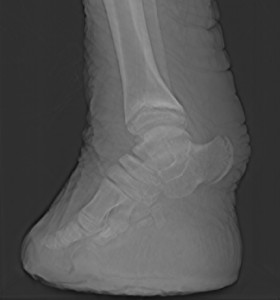
The panda is another example that Hutchinson touched on to highlight the use of a sesamoid bone to increase mobility. Instead of evolving an opposoble thumb to aid in grasping bamboo and feeding they use an enlarged sesamoid bone to act as a thumb instead. This adaption has fulfilled its role perfectly and allowed pandas to continue to feed on their exclusive food source, as long as it exists.
Leaving Hutchinson’s seminar I found myself questioning what else we are misunderstanding in the animal kingdom. How have these sesamoid bones which appear to have a huge role in mobility and muscle function pretty much escaped our attention till now and what else are we missing? Hutchinson’s work is a clear example that if you question the unlikely you could just discover something unexpected. Who would have thought it, a 6-toed, high-heels-wearing large mammal! It just doesn’t get better than that, or does it….?
———————————————————————————–
HOW does the chicken cross the road?
Rosie Murray
While a chicken’s reasons for crossing a road have long been fodder for comedians (the not-so-funny ones), science is less concerned with its motives, and more with its locomotives (that is, HOW chickens cross roads).
Locomotion in modern birds (Neornithes) has two remarkable features; feather-assisted flight and unusually crouched hindlimbs, for bipedal support and movement. I will focus on the issue of crouched hindlimbs.
As has been known for decades, modern birds are dinosaurs (even comparatively rubbish birds like chickens). So, the way birds – living dinosaurs – move is obviously a vitally important source of data for understanding how locomotion worked in extinct dinosaurs.
But birds have some unusual features that set them apart from all the other dinosaurs. A major difference is that birds don’t really have tails, or, if they do, they’re fairly negligible, feathery things. We know that all the other dinosaurs had really big, long, meaty tails. So, somewhere on the way to birds, the tail became so reduced in size that it has almost been totally lost.
The vast majority of land animals, including ourselves, move forwards by swinging the entire leg back-and-forth from the hip (hip-driven locomotion). However, birds keep their hips extremely bent; pointing their thighs forwards, and move around mostly by swinging the lower leg from the knee (knee-driven locomotion). This bent hipped, knee-driven style of moving gives them a characteristic “crouched” look.
But, let’s start at the very beginning. In order to move, terrestrial animals exert a force against the ground to support and then move their body. The reaction force of the ground (GRF) is directed at, or close to, the centre of mass (CoM). This stabilizes the body as it moves position. The GRF is mainly vertical during the mid-phase of locomotion. The mid-phase is when the hindlimb is poised beneath the body on its way forward. Bipedal animals such as birds use a single supporting limb for most of this stance. Therefore the foot of this limb must be placed directly underneath the CoM to exert the vertical GRF. The joints of the limb must also be suitably positioned so that the antigravity muscles can push against the ground in such a way as to move forward without losing balance. The location of the CoM is therefore a major determinant of the limb orientation at mid-stance (Fig. 1)
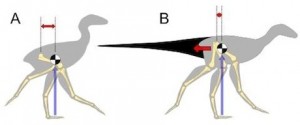
Losing the tail means that relatively more of a bird’s mass is at the front of the body, resulting in a more cranial CoM. To remain balanced, the feet and legs also need to be placed further forwards. And, one consequence of the crouched, knee-driven way birds walk and run is that the leg joint that does most of the job (the knee), can be stuck a lot further forwards on the body than the main joint other animals use (the hip). So a lot of the weirdness of bird locomotion may just be related to them having to put their legs more towards the front of the body, to match the CoM.
To test this, a team of scientists lead by Bruno Grossi took a simplified approach to the question, and stuck a big heavy tail on a chicken’s backside to mimic the stature of dinosaurs. And the CoM moved back, just like that. The chickens responded by straightening their legs and swinging their hips more, just as their dinosaur ancestors are hypothesized to do. If you’re interested in reading Gossi’s paper, you can find it here.
The current trend in this kind of research is towards more technical methods; using computer models to digitally reconstruct movement using every muscle, tendon and bone possible. Professor John Hutchinson and his team are doing exactly that. And their findings unarguably agree with Gossi’s very simple experiment, that the CoM of modern birds has moved forward, and brought with it, the ‘crouched’ stance that we see in the modern day chicken and its relatives.
So, how does the chicken cross the road? Well, as always in science, we can only say how does the chicken NOT cross the road? Not like a dinosaur (Fig. 2…not to scale!).
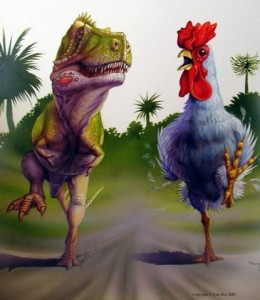
And, if you’re curious, you can check out this newly discovered dinosaur now termed ‘the chicken from hell’.

